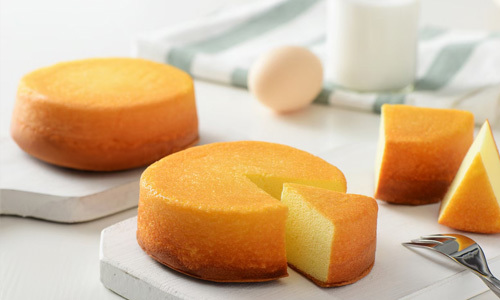Unleashing the Full Potential of Your Chiffon Cake Recipe with Aeration

2024/10/05
Unleashing the Full Potential of Your Chiffon Cake Recipe with Aeration
Table of Contents
- Introduction to Chiffon Cake and Aeration
- The Science of Aeration in Baking
- Essential Ingredients for Chiffon Cake
- Techniques for Aerating Your Chiffon Cake
- Common Mistakes to Avoid When Making Chiffon Cake
- Delicious Variations of Chiffon Cake
- Frequently Asked Questions about Chiffon Cake
- Conclusion: Mastering the Art of Chiffon Cake
Introduction to Chiffon Cake and Aeration
Chiffon cake is celebrated for its **lightness**, **fluffiness**, and delicate texture. It stands out in the world of baking due to its unique combination of ingredients, which include oil, eggs, sugar, and flour. The distinct characteristic of chiffon cake lies in its aeration process, which contributes to its remarkable volume and softness. In this guide, we will explore how proper aeration can unleash the full potential of your chiffon cake recipe, ensuring that each bite is an experience to remember.
The Science of Aeration in Baking
Aeration is the process of incorporating air into a mixture, which is crucial for baked goods as it creates a light and fluffy texture. In the case of chiffon cake, two primary methods contribute to effective aeration: **whipping eggs** and **folding in dry ingredients**.
Whipping Eggs for Maximum Volume
The first step in achieving valuable aeration in chiffon cakes is the **whipping of egg whites**. When egg whites are beaten, they undergo a transformation from a liquid state to a stable foam structure, trapping air bubbles that expand during baking. This process not only provides volume but also contributes to the cake's tender crumb.
Folding Techniques for Incorporating Ingredients
Once egg whites are whipped, gently folding them into the batter without deflating the air bubbles is essential. This step is where many bakers fail, leading to dense cakes. Use a spatula to incorporate the egg whites by lifting and folding the mixture, ensuring a uniform blend while maintaining the lightness.
Essential Ingredients for Chiffon Cake
To create a perfect chiffon cake, the selection and quality of ingredients are paramount. Here’s a breakdown of the essential components:
High-Quality Eggs
The quality of eggs plays a significant role in the aeration process. Fresh, large eggs provide the best results, as they whip up to a higher volume and create a more stable foam.
All-Purpose Flour
All-purpose flour is commonly used in chiffon cakes for its balanced protein content. It provides the necessary structure without making the cake too dense.
Granulated Sugar
Sugar not only adds sweetness but also stabilizes the egg whites and helps in the aeration process. It is critical to measure sugar accurately for optimal results.
Vegetable Oil
Unlike butter, vegetable oil remains liquid at room temperature, contributing to a moist texture. Oil also helps in emulsifying the batter, promoting even aeration.
Liquid Ingredients
Liquid ingredients such as milk or water add moisture to the batter. They can also help dissolve the sugar, ensuring a well-blended mixture.
Techniques for Aerating Your Chiffon Cake
The following techniques will enhance the aeration of your chiffon cake, resulting in a superior texture and flavor:
1. Proper Egg Separation
Ensure that no yolk contaminates the egg whites during the separation process. Even a small amount of yolk can hinder the whipping process, resulting in a less voluminous cake.
2. The Right Temperature
Using room-temperature eggs allows for better aeration compared to cold eggs. The proteins in room-temperature eggs whip more easily, yielding a fluffier consistency.
3. Whipping Techniques
When whipping egg whites, start at a low speed to create a stable foam. Gradually increase the speed to medium-high until soft peaks form. Avoid over-whipping, as this can lead to dry, grainy egg whites.
4. Incorporating Dry Ingredients
Sift dry ingredients before adding them to the batter. This process helps eliminate lumps and incorporates air, enhancing the cake’s lightness.
5. Folding with Care
Use a gentle folding technique when combining egg whites with the batter. This helps retain air bubbles and keeps the batter light.
Common Mistakes to Avoid When Making Chiffon Cake
Understanding potential pitfalls can help you create the perfect chiffon cake. Here are some common mistakes to avoid:
1. Overmixing the Batter
Overmixing can cause the cake to become dense. Mix just until combined, ensuring the batter remains light.
2. Incorrect Oven Temperature
Baking at too high or too low a temperature can affect the cake's rise. Always preheat your oven and use an oven thermometer to ensure accuracy.
3. Not Using a Tube Pan
Chiffon cakes rely on their structure to rise properly. Use a tube pan for the best results, as it allows the cake to expand and provides stability during baking.
4. Skipping the Cooling Process
Allow the chiffon cake to cool upside down to maintain its height and prevent collapsing. Skipping this step can lead to a dense cake.
5. Ignoring Ingredient Temperatures
Ensure all ingredients are at room temperature for the best results. Cold ingredients can lead to poor emulsification and a denser texture.
Delicious Variations of Chiffon Cake
Chiffon cakes are versatile and can be adapted to suit various tastes. Here are some delightful variations to consider:
Citrus Chiffon Cake
Incorporate lemon or orange zest and juice for a refreshing citrus twist. This variation adds brightness and complexity to the flavor.
Chocolate Chiffon Cake
Add cocoa powder to create a rich, chocolatey version of the classic chiffon cake. This indulgent treat is sure to please chocolate lovers.
Matcha Chiffon Cake
For a unique flavor, incorporate matcha powder into your batter. This green tea-infused chiffon cake offers a delightful taste and vibrant color.
Berry Chiffon Cake
Add pureed berries, such as strawberries or raspberries, to the batter for a fruity flavor and stunning visual appeal.
Spiced Chiffon Cake
Incorporate spices like cinnamon or nutmeg for a warm, aromatic twist. This variation is perfect for fall and winter gatherings.
Frequently Asked Questions about Chiffon Cake
1. Can I use a different type of flour?
While all-purpose flour is recommended for chiffon cakes, you can experiment with cake flour for a lighter texture. Just be mindful of the protein content.
2. How do I know when my cake is done baking?
A toothpick inserted in the center should come out clean, indicating that the cake is fully baked. The cake should also spring back when lightly pressed.
3. What can I substitute for vegetable oil?
Canola oil, sunflower oil, or melted coconut oil can be used as alternatives. Each will impart a slightly different flavor.
4. Is it necessary to use a tube pan?
Yes, a tube pan is highly recommended for chiffon cakes as it provides the structure needed for rising and cooling properly.
5. Can I freeze chiffon cake?
Absolutely! Chiffon cake freezes well. Wrap it tightly in plastic wrap and aluminum foil before freezing to maintain freshness.
Conclusion: Mastering the Art of Chiffon Cake
By harnessing the power of aeration and following the proper techniques, you can create a chiffon cake that is not only beautiful but also a delight to the palate. From understanding the science of aeration to mastering the essential techniques, every step contributes to the creation of this beloved dessert. Explore different variations to find your favorite, and remember that practice makes perfect. With dedication and a little creativity, you’ll soon be unleashing the full potential of your chiffon cake recipe, impressing friends and family alike with your baking prowess.
Chiffon cake aeration system







